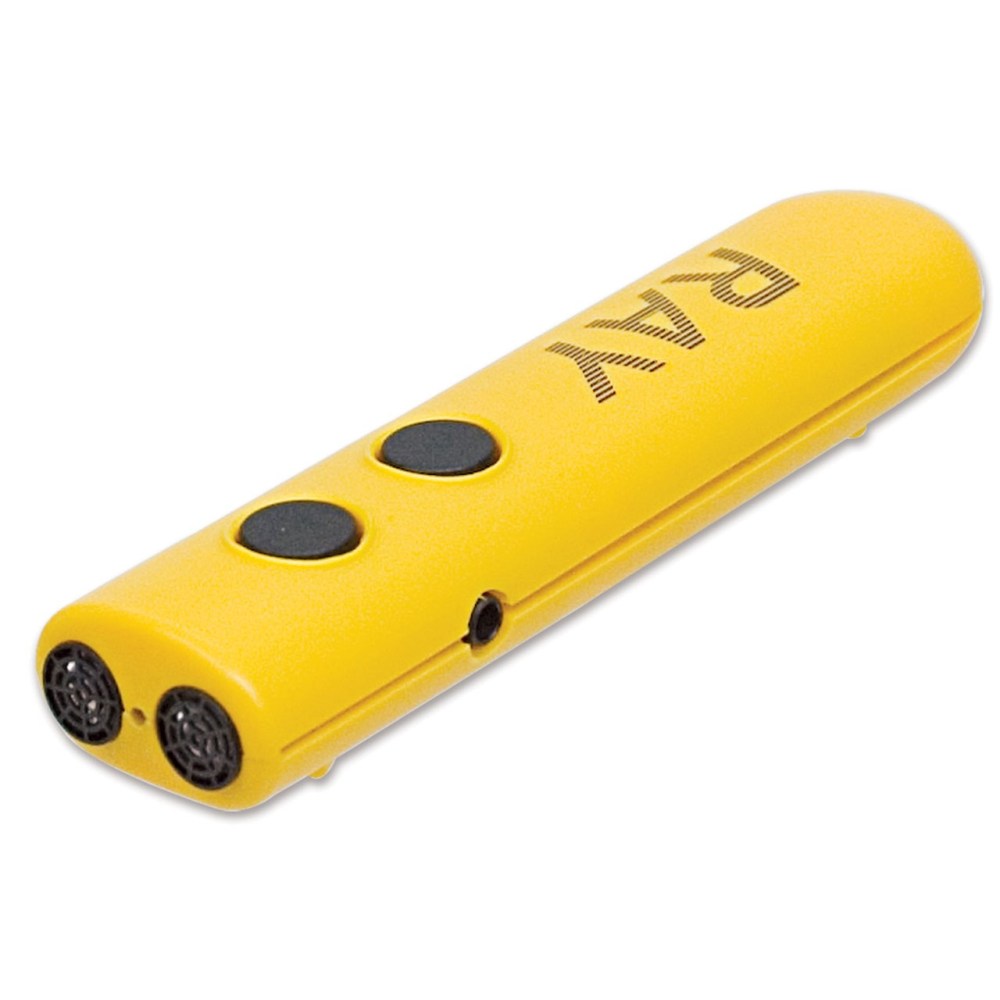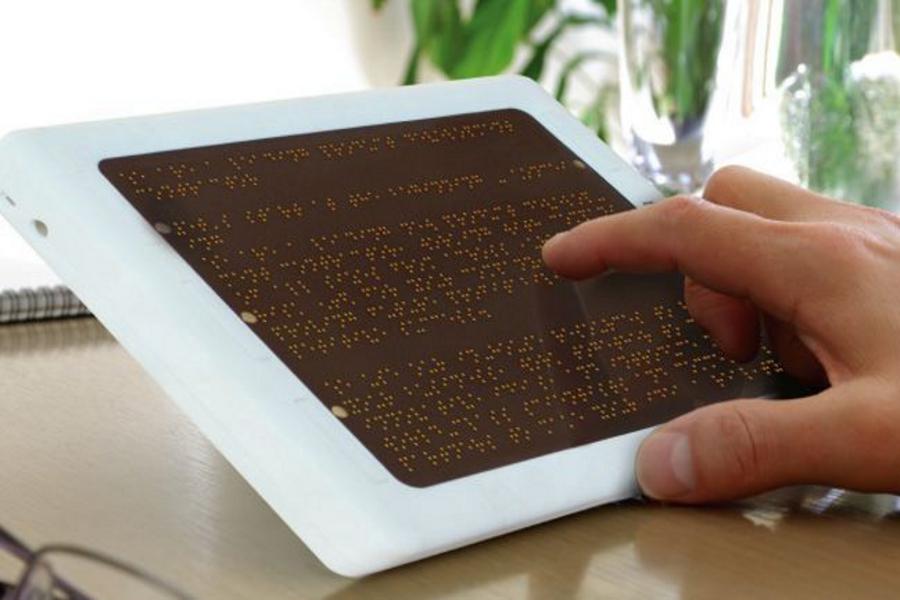Discover Ingenious Devices Developed for the Aesthetically Damaged
The growth of cutting-edge tools for the visually damaged stands for a substantial improvement in access and independence. Technologies such as smart glasses with AI capabilities and mobile applications created to provide acoustic summaries are improving everyday experiences for customers.
Smart Glasses for Navigation

Smart glasses developed for navigation are reinventing the method aesthetically impaired individuals connect with their environment. These advanced devices use a combination of video camera innovation, expert system, and auditory comments to offer real-time info about environments. By utilizing obstacle discovery systems, smart glasses can notify customers to prospective threats, making it possible for safer mobility in both unfamiliar and familiar settings.
The integration of GPS technology further boosts navigating capacities, permitting customers to get acoustic directions as they move. This hands-free approach not only cultivates freedom but likewise equips aesthetically damaged people to browse city landscapes with increased confidence. In addition, lots of wise glasses are furnished with functions that determine sites and street indicators, supplying contextual information that boosts the individual experience.
Additionally, the advancement of these devices is continually progressing, with business working to boost the accuracy of object recognition and increase the variety of navigational features. As clever glasses end up being much more cost effective and easily accessible, they hold the potential to significantly change everyday life for visually damaged individuals. Inevitably, these cutting-edge tools stand for an important step towards inclusivity, offering improved mobility and a better sense of freedom for people navigating the globe around them.

Mobile Apps for Daily Living
Just how can mobile applications boost the every day lives of aesthetically impaired individuals? Mobile applications are changing the method visually damaged customers navigate their environments, take care of day-to-day tasks, and access details. These applications give crucial assistance through numerous capabilities, promoting independence and boosting lifestyle.
Numerous ingenious mobile applications are created particularly for day-to-day living. As an example, applications like Be My Eyes link visually damaged users with sighted volunteers via video clip calls, permitting them to receive real-time aid with tasks such as reviewing labels or browsing unknown rooms. Seeing AI, developed by Microsoft, utilizes artificial knowledge to define surroundings, checked out message, and identify items, properly changing a smartphone into an effective device for daily support.
Additionally, navigation apps customized for the visually impaired, such as Aira and BlindSquare, use audio-based instructions and environmental information, allowing customers to traverse their environments safely and confidently. Past navigating and immediate support, mobile applications additionally sustain company and job management, with features that assist individuals establish tips, create order of business, and track visits. In recap, mobile applications act as vital resources, equipping visually damaged individuals to lead more independent and fulfilling lives.
Wearable Technologies for Support
Empowerment with innovation is significantly noticeable in the world of wearable gadgets created to help visually impaired individuals. These innovative devices incorporate flawlessly right into day-to-day life, improving navigation and offering vital comments to users. For circumstances, smart glasses equipped with cameras can recognize faces and review text out loud, enabling individuals to interact even more with confidence in social and expert setups.
An additional significant development is the use of haptic responses systems in wearable gadgets. These systems utilize resonances or other responsive signals to communicate information concerning the individual's environment, such as barriers or modifications in surface, enhancing mobility and safety and security. Wearable technologies additionally include wristbands that attach to smartphones, signaling users to alerts through refined vibrations, therefore boosting connectivity without dependence Braille displays and notetakers on visual hints.
As these technologies continue to advance, they are not only enhancing independence for visually damaged people however additionally fostering a higher sense of addition in culture. By bridging the space in between challenges encountered in daily living and the possibility for autonomy, wearable innovations offer as pivotal tools in the mission for equal rights and empowerment for those with visual disabilities.
Sound Summary Tools
Audio summary devices play a critical duty in enhancing ease of access for visually damaged individuals, giving them with the ability to engage with visual media. Assistive technology for the blind. These tools provide narrated descriptions of essential visual aspects in films, television shows, and live performances, guaranteeing that individuals can completely understand the context and feelings communicated with visuals
Audio description can be integrated into various systems, consisting of streaming solutions, movie theater testings, and live cinema. Several preferred streaming solutions currently consist of audio summary as an accessibility feature, permitting visitors to pick it conveniently. In enhancement to traditional media, specialized apps also exist, providing audio summaries for art exhibits, museums, and other social occasions.
The efficiency of audio description pivots on the ability of the narrators, who must share aesthetic details succinctly without diminishing the initial audio. Developments in this field are additionally leading the way for even more tailored experiences, where individuals can adjust the degree of information and pacing according to their preferences.
Braille Innovations and Tools
Braille devices and developments have actually dramatically transformed the way visually impaired individuals interact with text and information. Modern developments have caused the development of versatile devices that boost proficiency and independence amongst users. Notably, Braille display technologies have developed, enabling dynamic reading experiences. These devices convert digital text right into Braille, making it possible for customers to access a vast array of details on smart devices, computer systems, and tablet computers.
Additionally, portable Braille notetakers incorporate conventional Braille input with modern performances, helping with note-taking, organizing, and file editing on the go. Braille displays and notetakers. These portable devices commonly feature text-to-speech abilities, linking the gap between Braille and acoustic information
In addition, cutting-edge Braille printers have emerged, permitting users to produce Braille labels, files, and instructional materials effectively. This access fosters higher involvement in expert and instructional settings, ultimately promoting inclusivity.
Moreover, study into smart Braille innovations proceeds to increase. Devices that incorporate expert system are being discovered to provide real-time navigation support and contextual info, boosting the customer experience in varied setups. Overall, these developments reflect a commitment to equipping visually impaired individuals through technology, ensuring they can easily access and engage with the world around them.

Verdict
The development of ingenious devices for the visually damaged significantly improves freedom and top quality of life. These technologies not just foster better inclusion but also promote freedom in everyday tasks, eventually adding to an extra equitable and easily accessible society for visually damaged individuals.
As smart glasses become more available and economical, they hold the prospective to considerably change day-to-day life for aesthetically impaired customers. Mobile applications are transforming the way aesthetically damaged users navigate their environments, manage day-to-day tasks, and access details. Apps like Be My Eyes connect aesthetically impaired customers with sighted volunteers by means of video telephone calls, enabling them to receive real-time aid with tasks such as reviewing tags or navigating unknown spaces.In addition, navigation apps customized for the visually damaged, such as Aira and BlindSquare, provide audio-based directions and environmental information, making it possible for users to traverse their environments safely and with confidence.The development of cutting-edge tools for the aesthetically impaired dramatically enhances freedom and quality of life.